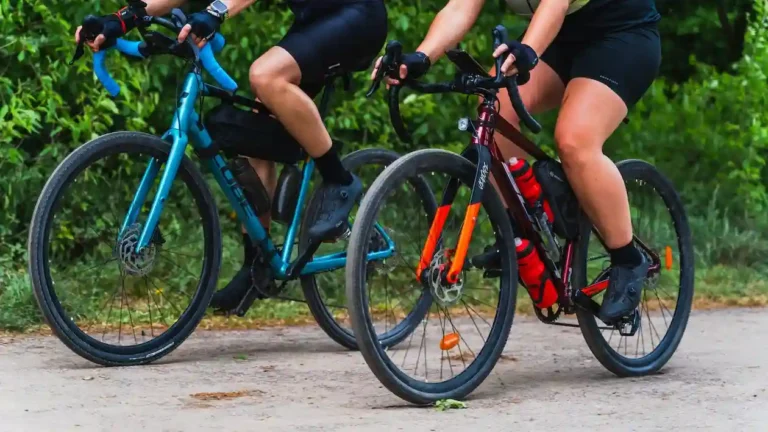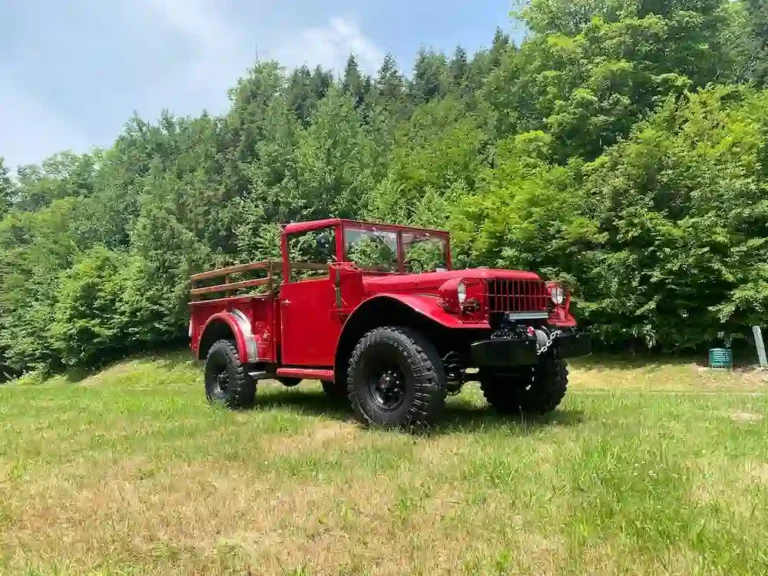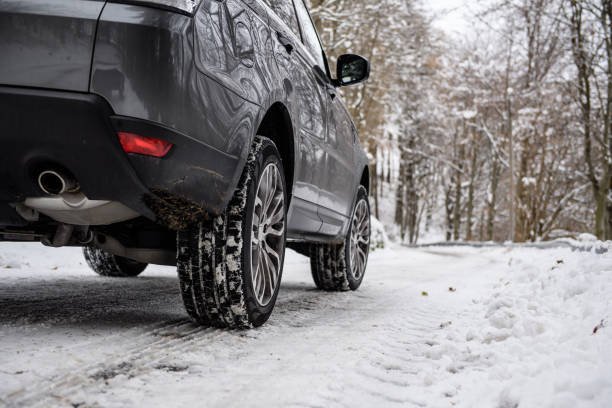Winter season is challenging in itself. What if we have to drive in winter, roads covered in snow? Isn’t that challenging?
The answer is obvious, it’s like a nightmare for drivers in this condition. Tires start to skid in the snow which makes the situation worse in the cold days of winter.
So are there any tires that can easily overcome this situation and can maneuver in icy conditions without any issues? Yes, you have come to the right place.
Here we have researched and compared 25 All-Terrain tires specially designed for snow. We have chosen 8 of those tires that we found more reliable based on the requirements of a tire to overcome the conditions.
What makes all-terrain tires different from general tires?
These tires are designed to provide optimal traction with varying surface conditions These tires possess deeper tread patterns, interlocking tread blocks, and open void ice and snow. Some are also equipped with sidewall reinforcement to withstand aggressive driving conditions.
So All-terrain tires are versatile.
What are The Best All terrain tires For Snow?
1. Michelin X-Ice Xi3
Load Range: SL
Load Index: 91
Warranty: 40000 mile
Max PSI: 51 PSI
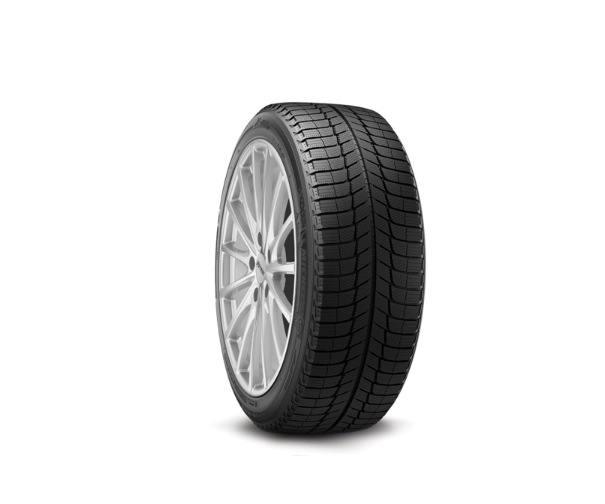
You want confidence and control when driving in winter conditions. I understand, which is why I recommend the Michelin X-Ice Xi3 tires.
The X-Ice Xi3 employs a silica compound that remarkably stays flexible even at cold temperatures when some tires go rigid. This flexibility enhances grip, giving reassuring traction even on packed snow.
When I’ve had to brake suddenly to avoid animals crossing the road, these tires bite into ice and snow better than other winter tires I’ve used.
It is equipped with Cross Z-slipes creating extra biting edges for improved braking, accelerating, and handling when you need to make sudden maneuvers.
The tread is directional, actively expelling water and slush so you have less risk of hydroplaning.
Wide grooves maintain road contact for precise steering response and control.
Low rolling resistance helps conserve your fuel. Its Comfort Control Technology reduces road noise and vibration for a quiet, comfortable ride.
For your peace of mind, the X-Ice Xi3 comes with a 40,000-mile mileage warranty and a 60-day satisfaction guarantee promises.
After hundreds of winter miles on all road conditions, I can say these are a great choice for drivers wanting peace of mind in foul weather without sacrificing smooth performance when the pavement reappears.
What I like
- Remarkable grip on icy surfaces encourages confidence and allows for smooth and more controlled braking
- tires’s response to steering inputs is praiseworthy
- Impressive stability and cornering grip make it a reliable companion for winter driving
- Reduced road noise
- Low rolling resistance contributes to excellent fuel economy.
What I dislike
- Higher price tag
- Due to higher demand may have to wait to purchase
- Not so an impressive performance on dry roads.
Helpful reviews
“I am a big fan of these Michelin X-Ice 3 tires for two main reasons.
First is the amazing traction they provide on the slipperiest of icy roads and in moderate amounts of snow. When the roads get compacted wet snow on them and then it rains on top of that to create a sheet of glare wet ice that you can’t even stand up on these tires somehow manage to grip almost like it’s dry pavement. If anything you have to remember to drive for the poor road conditions as these will give you a sense of overconfidence.
Secondly is the unheard-of amount of tread life you get out of these which would be good for any tires much less winter tires. I have had them on my AWD Ford Escape for seven, yes 7 full winters of everyday driving now and they still have over 7/32 or 70% of the tread remaining. That is unheard of for winter tires and in fact, I like these so much I have ordered another set to have around when needed now that Michelin is changing to a different design of Ice tires.
The only drawback I would give these X-Ice 3’s is that in deep snow of say over 6 inches, the tread will just load up and you start riding up on top of the snow and start to drift around. But considering they are not aggressive deep tread off-road tires that are entries to be expected, I imagine that is why Michelin calls the latest winter tires generation, ‘X-Ice snow’.”- Icy Road Driver
2. Nokian Hakkapeliitta R3
Load Range: XL
Load Index: 95
Max PSI: 51PSI
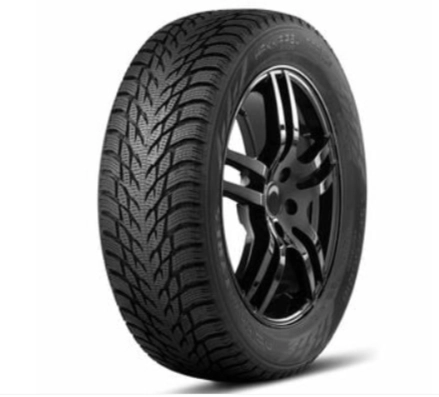
I recently used the Nokian Hakkapeliitta R3 and was impressed by its performance on icy, snow-covered roads. This tire lives up to its reputation for providing excellent winter traction and control.
If you drive in areas that regularly get winter weather, the Hakkapeliitta R3 is designed to give you optimal grip and handling when roads get slippery.
Its specialized tread pattern and advanced siping technology enable precise steering and short braking distances – giving you confidence and peace of mind even on dicey surfaces.
I appreciated that this tire is also focused on being eco-friendly. Its low rolling resistance helps minimize fuel consumption and CO2 emissions compared to other winter tires. Plus Nokian’s sidewall technology successfully reduces noise inside the cabin for a quieter, more comfortable ride.
One handy feature is the Winter Safety Indicator – the snowflake symbol on the tread that disappears when the tires wear over time. This lets you easily monitor when the tires may need replacing to maintain optimal winter performance.
While investing in premium tires has a higher upfront cost, I’ve found that the improved safety and longevity are worth it.
The Hakkapeliitta R3 delivers reliable traction through every winter season thanks to Nokian’s innovative design. I’d highly recommend it to fellow drivers in snowy areas looking for invincible winter performance.
What I like
- Excellent grip on snow and ice
- A quiet and peaceful ride
- Lower fuel consumption
- Advanced safety features like WSI
- Reliable and long-lasting investment
What I dislike
- Higher price tag
- Availability concerns in certain countries/regions
- Reduced performance in warmer weather.
Helpful reviews
“Got these winter tires for 2019 WRX. Works amazing, the grip is there and you can feel it. No road noise or anything. With the first snowfall, tires worked great, amazing grip.”
“Just purchased these winter tires for my Toyota Avalon. I’m usually loyal to Michelin and Bridgestone, but these winter tires were tested by Kal tires, rated higher in all important categories compared to Michelin and Bridgestone, had great reviews, and were priced right. Gave them a try and I was not disappointed; they handled very well in the snow and slippery conditions. I recommend them. As expected, service was first class… as always.”
3. Falken Wildpeak A/T Trail
Load Range: SL
Load Index: 95
Traction: A
Temperature: A
Warranty: 65000 mile
Max PSI: 51PSI

If you have an SUV or truck and want tires that can confidently tackle different terrains, the Wildpeak A/T balances durability, comfort, and performance. The aggressive tread pattern provides excellent traction in mud, dirt, and rocks without compromising ride quality on highways.
I drove them through some challenging Rocky Mountain trails with steep inclines and loose gravel. The staggered shoulder blocks gripped the surface to keep me in control around corners. I also appreciate that Falken engineered these with sturdy construction to withstand off-road punishment – the three-ply design is remarkably resilient.
These tires are M+S rated to handle mud and snow for all-season versatility. Even on slick winter roads, the full-depth sipes help maintain reliable grip and traction. I’ve been impressed by the year-round stability.
And although they’re rugged, the Wildpeak A/Ts ride quieter than other off-road tires I’ve used thanks to sound-optimizing tread. No annoying roar in the cabin! For anyone wanting an all-terrain tire tough enough for backcountry use but refined for daily driving, I highly recommend Falken’s design. They get the job done wherever you need to go.
What I like
- Brilliant grip on any surfaces
- Less noise
- Impressive tread life
- All weather capabilities make off-road fans to explore trials
- Protection against cuts and damage
What I dislike
- More fuel consumption
- Not useful for extreme winter conditions
- May not be readily available in less common sizes, limiting vehicles
Helpful reviews
“Before I bought these tires, I had thought I had a suspension issue all over the vehicle. It turns out that my tires were aging and hardening. Once replaced with the Falken Wildpeak A/T trail tires, it seems all my “suspension issues” went away. I would recommend to anyone looking for a good set of Terrain/SUV Crossover tires.”
“Tires are working out well. My road/driveway in the Smokies is rough with big rocks. It ruined some Goodyear Kevlar tires a couple of years ago. These have done well. We have put about 3500 miles on the tires on wet, and dry while empty and towing with no slippage or adverse issues. Love them so far!”
4. Continental Winter Contact SI
Load Range: SL
Load Index: 99
Max PSI: 51PSI

If you drive somewhere that sees a lot of winter precipitation, the Winter Contact SI is designed to provide exceptional grip even in extreme conditions thanks to Continental’s advanced “Polar Plus” rubber compound.
I drove on numerous snow-covered and frozen roads and these tires held firm, allowing me to corner and brake with confidence as conditions rapidly changed.
I appreciated that the tread has additional chunky traction lugs, as well as a high amount of siping to dig into packed snow and ice. A few times when roads were slick, the shorter braking distance gave you added peace of mind. The grooved design also effectively channels water away to resist hydroplaning in wet conditions.
While optimized for winter performance, Continental didn’t neglect ride comfort and refinement either. I found the Winter Contact to be quiet and smooth rolling at high speeds on clear pavement.
For drivers wanting a premium winter tire to rely on year after year, I can say first-hand these deliver exceptional stability and control all season long, living up to Continental’s reputation. The combination of advanced engineering and 150 years of experience is clear in this tire.
What I like
- Superb grip on slippery surfaces
- Less breaking distance
- Responsive and accurate handling
- Outstanding durability
- Quiet and comfortable
What I dislike
- Higher price
- Limited size for certain vehicle models
- Decreased performance in deep snow areas.
Helpful reviews
“9000+km over a tough Ottawa winter including 3800km trip to South Carolina at Interstate speeds. Super quiet and smooth for winter tires. Good fuel economy. Great handling and control in all conditions. 1/32 in of tread wear. If summer tread wear was good I would consider leaving them on all year. Yes, A/S tires are a bit quieter and smoother, but these are very close.”
“Great tires for Honda Accord. Much quieter and smoother ride, which wasn’t tough to do vs. the Goodyear Assurance tires. tires are great in snow and slush. It snowed one day after these were installed and I drove 40 miles on unplowed highways with a lot of confidence. The Accord goes from slipping and spinning to a snow beast with the tires changed. So yeah if you have snow where you live these are great. Or if you want a more comfortable ride in Winter then these are great for that also.”
5. Goodyear Ultra Grip Ice WRT
Load Range: SL
Load Index: 84
Max PSI: 51 PSI

If you drive somewhere with harsh winters, the Ultra Grip Ice stands out for its impressive grip and traction even on the slipperiest surfaces. Goodyear crafted its tread compound to stay flexible even in extreme cold, which plays a key role in giving you better braking capacity along with stability.
I drove on a variety of surfaces – packed snow, frozen highways, sloshy back roads – and felt secure thanks to the directional treads and abundant 3D sipes that bite into ice and throw off water efficiently.
The frequent biting edges around the tires also lend consistent traction around curves and when needing to stop quickly.
It’s clear Goodyear built this to master wintry terrain while not sacrificing ride quality. The tread design makes for a quiet, comfortable ride on clear pavement. For extra confidence, this tire meets the industry snowflake rating for severe snow conditions.
For drivers wanting reliable winter performance, I can say first-hand the Ultra Grip Ice handled very well and made me feel at ease navigating icy roads. Goodyear designed a real standout tire to conquer whatever winter dishes out.
What I like
- Simply unmatched when it comes to tackling icy and snowy terrains
- Responsive breaking and grip
- Precise steering control
- Prolonged lifespan-making-wise investment
- Excellent noise reduction
What I dislike
- Less fuel efficient due to higher rolling resistance
- Lacks optimal performance in dry surfaces of summer
- Challenging to find the exact size of less common vehicle models.
Helpful reviews
“Third winter with Goodyear Ultra Grip SUV studded winter tires on a 2007 GMC Yukon 4-wheel drive. Excellent traction on hard-packed snow and ice. The only time I’ve lost grip was with fresh snow on the ice. Traction control rarely comes on with either braking or accelerating. My summer tires are Michelin MS2 and the difference on snow is noticeable but significant on ice. Stud noise is not a problem even on long trips at highway speeds…… studs/tires worth every penny!”
“What impressed me the most was the good value quick shipping and communication. I look forward to dealing with this company for many years.”
6. Firestone Winterforce UV
Load Range: SL
Load Index: 100
Max PSI: 44PSI

If you drive somewhere that gets heavy snow and icy temperatures, the specialized Winter Force is designed to boost your confidence when roads get sloppy.
Firestone equipped this tire with an aggressive tread that grips and maneuvers well on packed snow and slush. Even when temperatures plummeted below freezing, the silica-infused rubber compound remained flexible and sticky for dependable handling.
I appreciated thoughtful features like the visual winter traction indicator that shows you the level of grip left, maximizing safety.
The deep, widely spaced grooves also efficiently channeled away water, preventing scary hydroplaning situations on wet pavement. Meanwhile, the dense network of 3D sipes and biting edges delivered rock-solid stability around curves and during braking.
While optimized for winter traction, Firestone also prioritized a smooth, quiet ride on clear roads.
For drivers wanting peace of mind navigating winter’s worst, I can vouch that the Winter Force UV performed admirably through whatever my area’s harsh season dished out. Firestone designed a tire that can conquer the cold with confidence.
What I like
- Superb traction on snowy and icy surfaces
- Tread design that provides impressive stability minimizes the risk of skidding
- An aggressive tread pattern makes slow tread wear which makes the tyre durable making the investment worthwhile
- Winter performance indicators allow us for potential safety concerns
- Effective water channeling mechanism
What I dislike
- Moderate level of noise
- Compromise handling on a dry surface
- Availability may be restricted depending on the location
Helpful reviews
Got the 265/75R16s. Rubbed a little bit on the right mud flap. The speedometer reads correctly versus the original 265/70R16’s Vehicle has a noticeably better grab to the pavement. Better control on Dry, Wet, and Snow. The previous tire was a Yokohama Geolander HT/S 265/70R16. Got these tires for $79ea. Great price-quality ratio! Don’t waste your money on the higher-dollar tires!
My 4Runner put these tires to the test in 51 feet of snow last winter in Mammoth Lakes, CA. These are great tires in all conditions.
7. Bridgestone Blizzak WS80
Load Range: XL
Load Index: 97
Max PSI: 44
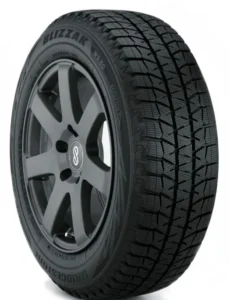
As a driver who battles tough wintry conditions, I rely on tires that can handle snow and ice with competence. After testing the Bridgestone Blizzak WS80 last winter, I was very happy with its impressive grip and control on frosty roads.
Even when temperatures plummeted below freezing, the advanced winter compound remained flexible to grip slick surfaces, allowing me to brake and maneuver with confidence.
I drove on many snow-covered highways and backroads and was relieved by how the biting edges dug in to shorten my stopping distance.
It felt reassuring knowing the tread particles act like microscopic spikes for additional grip. The optimized contact with the road also kept my vehicle tracking straight and true around curves.
Another thoughtful touch is the hydrophilic coating that helps traction by absorbing surface moisture on wet roads. And though specialized for winter, Bridgestone didn’t neglect on-road refinement – the Blizzak rides quietly thanks to its noise-minimizing tread.
What I like
- Adds confidence while Navigation on the snowy surfaces with its superb traction.
- Superb braking capabilities on wet and slippery roads.
- Accurate and responsive handling makes the vehicle remain in our control whatever the surface is.
- Excellent tread life proving long-lasting even in harsh conditions
- Better control in turnings mitigating the risk of skidding
What I dislike
- Reduced performance on dry roads
- Blizzard WS80 seems to be priced higher
- In certain regions of the world, it may not be available.
Helpful reviews
“Awesome grip in the snow and winter conditions! I bought these tires for a 2007 Honda Accord and am very pleased with how they performed last winter. Great stopping power & traction from a standstill.
I drive in Wisconsin and put on around 5000-9000k miles on these last winter before switching to my all-seasons for summer driving. Based on that driving, the tread life seems good. I drove 90 minutes to work last winter, 45 minutes each way. I highly recommend these tires for FWD vehicles.
I feel you can avoid spending the $ on an AWD vehicle by putting Blizzak on your vehicle. I am surprised to hear folks complaining about the noise these tires make- they ride like a dream to me!! (BTW I also have Blizzaks for my 2010 Nissan Versa and they ride great, I am pleased with Blizzaks.)
Tip: Do yourself a favor and get an extra set of rims, even steel wheels will work so you can easily swap between all seasons and winter tires yourself. I got an extra set of rims at my local salvage yard. Safety is worth the investment!”
“The best winter tires I’ve used to date. Used for three winters for traveling around the northern US (33,000 miles total), on a Subaru SJ Forester (2018). At this time, there was never any situation where the vehicle was unable to climb an icy hill or traverse deep snow.
The car has been buried in deep snow, past the subframe, and has always crawled right out with little drama. Tread wear has been very even, and after 33,000 miles tread depth is ~6/32 (these were rotated every 4,000 miles, with pressure religiously maintained at the manufacturer’s spec of 30 psi front/ 29 rear. Noticeably noisier than the OEM all-season tires, as expected. Very small penalty to fuel mileage, ~5%.”
8. Cooper Discoverer AT3 XLT
Load Range: E(10 ply)
Load Index: 121
Warranty: 60000 mile
Max PSI: 80
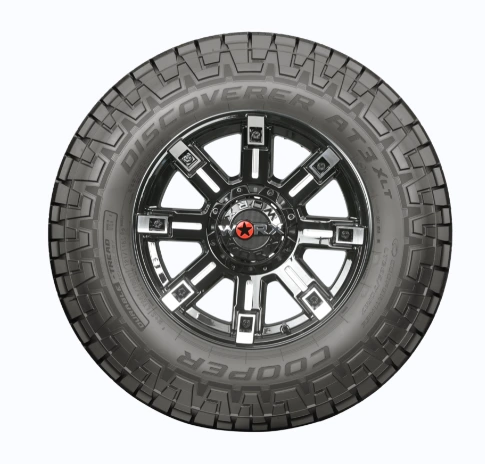
If you frequently go off-roading and need an aggressive all-terrain tire, the AT3 XLT provides exceptional traction whether on rocky trails, snow-covered roads, or slippery mud. The five-rib tread pattern grips well on diverse surfaces, adapting seamlessly so you can keep moving confidently.
I drove it through some challenging mountain passes with loose gravel, steep inclines, and tricky corners. Despite the punishment, the triple-ply Armor-Tek3 sidewalls resisted impact damage and prevented pesky punctures. Knowing these rugged tires can withstand rugged punishment brings peace of mind when miles from help.
In winter conditions, the silica-enhanced rubber ensured reliable grip and stability on icy and slushy roads as temperatures fluctuated. Shortened braking distances were a relief too!
And while ruggedly designed, Cooper didn’t neglect a smooth highway ride – the AT3 XLT rolls quietly with minimal road noise for all-day driving comfort.
What I like
- It can provide exceptional traction on any surface, secure grip, and safety during various weather conditions.
- Safe against cuts punctures and abrasion making it durable
- Smooth and quiet ride
- Remarkable performance in different environments making it ideal for year-round usage. So we don’t have to keep separate tires for the separate season
- Sport looks add style to any vehicle.
What I dislike
- Relatively more expensive
- Potentially limiting options for certain vehicle models
- Lower fuel efficient
Helpful reviews
“The Discoverer AT3 XLT has been on my 3500 for just under 2 years and 80K miles. About 30K of those miles have been dragging generators or a deck over gooseneck with loads weighing in from 12,000 – 15,000 lbs.
Rotated every oil change and balanced a few times and have had no problems. Most of the miles have been on paved roads but spend a fair bit of time on gravel ranch roads and in pastures and have had a superior experience. Calling the shop to have another set brought in to replace these.”
Related:
Choosing All Terrain Tires For Snow: Buying Guide
When it comes to driving in snowy conditions, having the right set of tires can make all the difference. All-terrain tires are a popular choice for vehicles that encounter a variety of road conditions and weather. When selecting all-terrain tires for snow capability, there are several key factors to consider including size, design, performance, price, and warranty.
Size
The size of the tire refers to its width, aspect ratio, and wheel diameter. Using a narrower tire with a higher aspect ratio can improve performance in snow, as it cuts through to the pavement below more easily.
However, you still want enough tires to maintain stability and float on loose snow surfaces. Most experts recommend all-terrain tires that are no more than 10% narrower than your original equipment tires. The diameter should match your vehicle’s wheel size.
Read detail about tire sizing guide
Design
All-terrain tire designs include features like wide circumferential grooves, sipes (small slits), and aggressive shoulder blocks to allow the tires to grip when driving on snow and slush. The grooves allow the tire to penetrate through snow to the road surface while providing space for water, ice, and snow to be channeled away. Look for a high void ratio (the space between the rubber) and a tread depth of at least 7-8mm for winter driving conditions.
Performance
Key performance indicators for snow capability include traction, braking, and acceleration. Look for tires certified for severe snow conditions with a 3-peak mountain snowflake symbol. All-terrain tires may note the tread compound rubber hardness which can indicate grip on icy roads. Softer compounds tend to perform better on ice.
Price
All-terrain tires are available across a wide range of price points from budget options to premium tires. In general, the higher the price, the better the overall performance especially when it comes to snow and ice traction. However, there are still capable all-terrain options for under $200 per tire. Set a budget and aim for the best snow/ice-rated tire you can afford.
Warranty
Many all-terrain tire warranties range from 50,000 to 70,000 miles treadwear depending on the model. Tires with reinforced sidewalls tend to have better warranties against defects. Also, look for tread life warranties that guarantee coverage for snow traction over a set number of years as tread depth wears down. This ensures you’ll have capable snow performance for multiple winter driving seasons before needing a replacement set.
FAQs
Can all-terrain tires be used in the snow?
Yes, all-terrain tires can be used in snow. They are a good option for driving in winter weather conditions compared to all-season tires. Here are some key reasons why all-terrain tires perform well in the snow:
- The aggressive tread pattern of all-terrain tires is designed to give added traction and grip to loose or uneven terrain like snow. Wide circumferential grooves help channel away slush and moisture for a better grip.
- They are built with durable construction to resist damage from winter conditions. Features like reinforced sidewalls, strong belts inside the tread area, and sturdy shoulder blocks allow all-terrain tires to take on icy, snowy roads without excessive wear and tear.
- Many all-terrain tires use a special tread compound rubber formulated to stay flexible and grippy in cold, wet wintry conditions. This adds to their performance on icy and packed snow roads.
- Leading all-terrain tire brands have options certified with the three-peak mountain snowflake rating which means they have met standards for traction, acceleration, and braking in severe snow testing.
Are all-terrain tires best for snow?
No, all-terrain tires are not the best option for driving in heavy snow. Dedicated winter or snow tires typically outperform all terrains in deep snow and icy conditions. However, all-terrain tires are a good compromise if you need one tire to handle a variety of road conditions year-round.
How do I know what size all-terrain tires to purchase?
The best way to determine appropriate all-terrain tire sizing is to check your vehicle owner’s manual or door placard for original size and replacement recommendations. You can typically go slightly narrower (10-15%) or taller than the original tires to improve off-road capability if needed while preserving proper drivability.
Consulting local tire shops or sites like TireRack for your vehicle’s year, make and model can also assist in matching the ideal new all-terrain tire dimensions that fit safely and align with your main usage – whether highway, off-road, snow or a blend.
Do all-terrain tires require special maintenance?
No, all-terrain tires do not require special maintenance compared to regular tires. Just follow typical tire care – check pressures monthly, inspect for damage, rotate every 5K-8K miles, and replace when tread depth is low. Their rugged build handles off-roading with fewer issues if sized right and not abused excessively. Basic care suffices.


